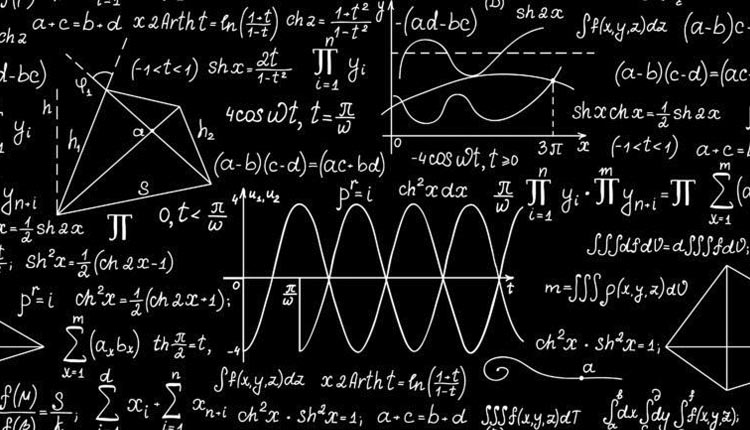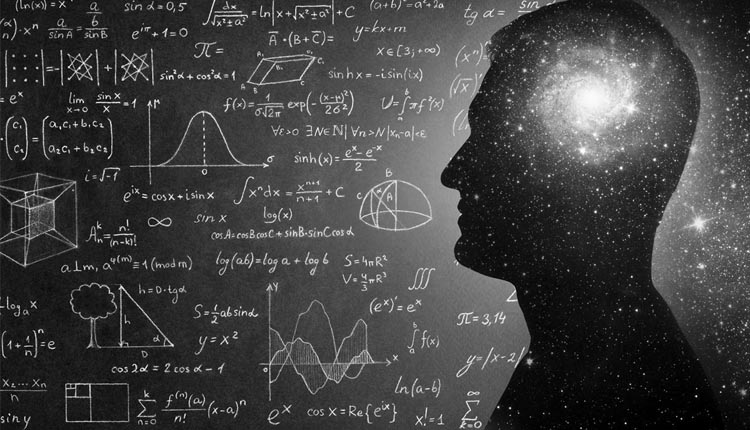
Teach Yourself Probability and Statistics
Languages: Urdu, English
These are self-study lectures on probability theory suitable for college level students studying mathematics, physics, economics, and business.
- Random experiments, sample space and events, A quick review of sets, Venn diagrams and consequences, Sample space and events — examples, Axioms of probability, Probability — elementary examples
- Factorials and their applications, Pascal’s Triangle, Counting outcomes, Conditional probability, Worked examples of conditional probability, Probability trees, Bayes’ Rule
- Random variables, Geometric random variable, Binomial random variable, Expectation (mean) values, Worked examples. Poisson random variable, Call centre problem
- Variance and standard variation, E[X] and E[X^2] for binomial distribution, The Chebyshev Rule, Cumulative Distribution Function, Continuous random variables, Connecting discrete to continuous probabilities, Examples of continuous probability distributions
- Covariance and Correlation, Some simple properties of covariance, A physical understanding of covariance, Several discrete random variables, Illustrative solved examples
- Two continuous random variables, Some basic formulae, Practice with double integrals, Example: trains arriving at a station, Example: aiming darts at a board, Example: Buffon’s needle
- A function of generating moments, Example: Binomial Distribution, Example: Poisson Distribution, Example: Exponential Distribution, Introduction to Normal Distribution, Binomial Distribution Normal Distribution (proof), Law of Large Numbers (with proof)
- Central Limit Theorem – with potatoes, CLT – why it is astonishing, Generating moments of the normal distribution, Generating moments for n independent variables, Proof of CLT, CLT for i.i.d’s that are uniformly distributed, CLT – three applications
- One-dim drunkard’s walk – a first look, Random walk definitions, First return theorem, The eventual return problem, Random walk in two dimensions
- States, Transitions, Markov Chains, Three examples of Markovian processes, Markovian basics, Regular (ergodic) Markov Chains, Absorbing Markov Chains
Recommended textbooks and materials:
- A Natural Introduction to Probability Theory, Robert Meester, Birkhäuser Verlag (2008).
- Introduction to Probability Models, 9th Edition, Elsevier (2009).
- Grinstead and Snell’s Introduction to Probability, the CHANCE Project (2006).
- Probability Theory and its Applications, William Feller, 3rd edition, John Wiley (1970).
For worked examples, I strongly recommend the books by Hossein Pishro-Nik which you can easily locate with a Google search.

Thermodynamics Made Easy
Languages: Urdu, English
These lectures are suitable for undergraduate level teaching (years 16-20) and provide the conceptual foundations of thermodynamics. Although several examples are worked out here, for a fuller grasp of the subject students should work out at least some problems in the texts recommended below.
- Heat, temperature, zero’th Law of thermodynamics, thermometers, absolute zero, third law of thermodynamics
- Conversion of energy from one form to another, units of heat and energy, internal energy (example: ideal gas), thermodynamic variables and equation of state, isolated, closed and open systems, first law of thermodynamics (circa 1840), exact and inexact differentials
- Adding heat to a system, various heat capacities of a substance, enthalpy and its uses, moles: a quick reminder from chemistry, measuring heat capacities, heat capacities of a non-ideal gas
- Reversible and irreversible processes, isothermal expansion of a gas, adiabatic expansion of a gas, free expansion of a gas, application: speed of sound
- Entropy – a qualitative understanding, entropy – formal definition, entropy as a state function, thermodynamic cycles, worked example
- Heat engines and efficiency, carnot engine, second law of thermodynamics, equivalence between Clausius and Kelvin statements, the Carnot engine is universal – proof, analyzing the Carnot engine, solved example
- Absolute temperature defined, the Clausius inequality – derivation, consequences of the Clausius inequality, why the entropy of the universe has to increase, using entropy as a state variable, solved example I, solved example II
- Helmholtz free energy, Gibbs free energy, application to chemical reactions, melting and Gibbs free energy, open systems and Gibbs free energy, chemical potential – physical interpretation, chemical potential for an ideal gas
- Examples of phase transitions, melting of ice – worked example, Euler’s theorem and molar quantities, Clausius-Clapeyron equation – derivation, phase diagrams, first and second order phase transitions
- Black body basics (Planck, Stefan-Boltzmann, Wien), how hot is that star?, sun as a black body radiator, basics of the photon gas, thermodynamics of the expanding universe
Recommended textbooks and materials:
- Feynman Lectures in Physics – chapters 44, 45, 46
- Principles of Thermodynamics, Jean-Philippe Ansermet and Sylvain D. Brechet
- Essential Classical Thermodynamics, Ulf W. Gedde
- Problems and Solutions on Thermodynamics and Statistical Mechanics, World Scientific

Teach Yourself Waves And Oscillations
Language: English
Goal: To enable students to learn this beautiful subject with zero or minimal assistance.
- Unit 1: Introduction
- Unit 2: Standing Waves
- Unit 3: String Theory
- Unit 4: Transfer of Energy and Information
- Unit 5: Sound Propagation in Gases
- Unit 6: Interference, Diffraction and Huygen’s Principle
- Unit 7: Electromagnetic Waves

Teach Yourself Quantum Mechanics
Language: Urdu
Goal: To enable students to learn this beautiful subject with zero or minimal assistance.
- Unit 1: Introduction
- Unit 2: Basics
- Unit 3: Observables and Operators
- Unit 4: The Free Particle in Quantum Mechanics
- Unit 5: Expanding in Eigenfunctions
- Unit 6: Quantum Simple Harmonic Oscillator
- Unit 7: Bound and Unbound States
- Unit 8: Quantum Mechanical Tunneling
- Unit 9: Angular Momentum (Part I)
- Unit 10: Angular Momentum (Part II)
- Unit 11: Hydrogen Atom (Part-I)
- Unit 12: Hydrogen Atom (Part-II)

Teach Yourself Special Relativity
Languages: Urdu, English
Goal: To enable students to learn this beautiful subject with zero or minimal assistance.
Click here to download the contents and instructions for this series of 8 self-learning lectures.
- Lecture 1: Space and Time (English, Urdu)
- Lecture 2: Einstein’s Postulates (English, Urdu)
- Lecture 3: Simultaneity and Causality (English, Urdu)
- Lecture 4: Adding Velocities (English, Urdu)
- Lecture 5: Scalars, Vectors, and Tensors (English, Urdu)
- Lecture 6: Momentum and Energy (English, Urdu)
- Lecture 7: Applications of Relativity (English, Urdu)
- Lecture 8: Relativity and Electromagnetism (English, Urdu)

Teach Yourself Calculus
Languages: Urdu, English
Goal: To enable students to learn this beautiful subject with zero or minimal assistance.
Click here to download the contents and instructions for this series of 30 self-learning lectures.
LECTURES
- Lecture 1: Functions (English, Urdu)
- Lecture 2: Graphs of Functions – I (English, Urdu)
- Lecture 3: Graphs of Functions -II (English, Urdu)
- Lecture 4: Limits (English, Urdu)
- Lecture 5: Continuous Functions (English, Urdu)
- Lecture 6: Differentiation – I (English, Urdu)
- Lecture 7: Differentiation – II (English, Urdu)
- Lecture 8: Maxima and Minima (English, Urdu)
- Lecture 9: Useful Calculus Theorems (English, Urdu)
- Lecture 10: The Exponential Function (English, Urdu)
- Lecture 11: Inverse Functions and Logarithms (English, Urdu)
- Lecture 12: Taylor’s Theorem (English, Urdu)
- Lecture 13: Integration – I (English, Urdu)
- Lecture 14: Integration – II (English, Urdu)
- Lecture 15: Integration Techniques – I (English, Urdu)
- Lecture 16: Integration Techniques – II (English, Urdu)
- Lecture 17: Integration Techniques – III (English, Urdu)
- Lecture 18: Convergent and Divergent Integrals (English, Urdu)
- Lecture 19: Numerical Integration (English, Urdu)
- Lecture 20: Length of a Curve (English, Urdu)
- Lecture 21: Areas and Volumes (English, Urdu)
- Lecture 22: Parametric Curves (English, Urdu)
- Lecture 23: Polar Coordinates (English, Urdu)
- Lecture 24: Vectors (English, Urdu)
- Lecture 25: Vector-valued Functions (English, Urdu)
- Lecture 26: 1st Order Differential Equations – I (English, Urdu)
- Lecture 27: 1st Order Differential Equations – II (English, Urdu)
- Lecture 28: Complex Numbers (English, Urdu)
- Lecture 29: Sequences and Series – I (English, Urdu)
- Lecture 30: Sequences and Series – II (English, Urdu)

Teach Yourself Physics
Language: Urdu
Click here for accompanying Notes for Video Lectures (1-45) below:
- Lecture 1: Introduction to physics and this course
- Lecture 2: Kinematics – I
- Lecture 3: Kinematics – II
- Lecture 4: Force and Newton’s Laws
- Lecture 5: Applications of Newton’s Laws – I
- Lecture 6: Applications of Newton’s Laws – II
- Lecture 7: Work and Energy
- Lecture 8: Conservation of Energy
- Lecture 9: Momentum
- Lecture 10: Collisions
- Lecture 11: Rotational Kinematics
- Lecture 12: Physics of Many Particles
- Lecture 13: Angular Momentum
- Lecture 14: Equilibrium of Rigid Bodies
- Lecture 15: Oscillations – I
- Lecture 16: Oscillations – II
- Lecture 17: Physics of Materials
- Lecture 18: Physics of Fluids
- Lecture 19: Physics of Sound
- Lecture 20: Wave Motion
- Lecture 21: Gravitation
- Lecture 22: Electrostatics – I
- Lecture 23: Electrostatics – II
- Lecture 24: Electric Potential
- Lecture 25: Capacitors and Currents
- Lecture 26: Currents and Circuits
- Lecture 27: The Magnetic Field
- Lecture 28: Electromagnetic Induction
- Lecture 29: Alternating Current
- Lecture 30: Electromagnetic Waves
- Lecture 31: Physics of Light
- Lecture 32: Interaction of Light with Matter
- Lecture 33: Interference and Diffraction
- Lecture 34: The Particle Nature of Light
- Lecture 35: Geometrical Optics
- Lecture 36: Heat – I
- Lecture 37: Heat – II
- Lecture 38: Heat – III
- Lecture 39: Special Relativity – I
- Lecture 40: Special Relativity – II
- Lecture 41: Matter as Waves
- Lecture 42: Quantum Mechanics
- Lecture 43: Introduction to Atomic Physics
- Lecture 44: Introduction to Nuclear Physics
- Lecture 45: Physics of the Sun

7 Comments
Israr Karim · April 30, 2022 at 4:51 am
These courses are really helpful. If possible plz make a course on GRE Quantitative reasoning section etc.
Ani S · May 2, 2022 at 7:25 am
Great learning material! No one should have an excuse that they “missed” the class!
Muslim Hussain · May 10, 2022 at 5:55 pm
We will follow all lectures Inshallah
Dania · June 5, 2022 at 10:33 am
A great deal of lectures I found here… keep Up the best work sir 🤗🇵🇰
Tassawar Iqbal · June 25, 2022 at 3:13 pm
I will follow all lectures Insha Allah
Zain ul abidin · July 30, 2022 at 6:37 pm
How to get the membership for these tutorials
Shivam Kumar · May 16, 2023 at 9:26 am
Thank you parvezhoodboy sir I am fan of your way to explain science .I am from India and studying in IIT .The black hole youtube channel Provides Great understanding obout science